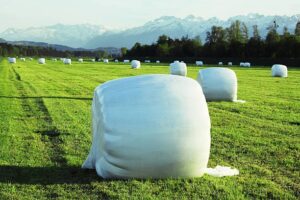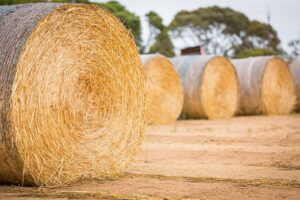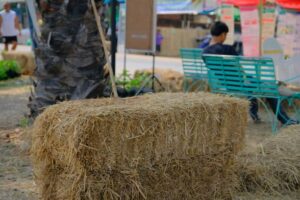In the heartland of South Australia lies Adelaide, a city surrounded by a patchwork of farms that contribute significantly to the nation’s agricultural output. Among Adelaide’s farmers, the art of preserving silage stands as a critical task, ensuring that the fruits of their labour endure beyond the harvest season. At the core of this preservation process is the selection of a reliable silage plastic supplier, a decision that can profoundly impact the success and sustainability of farm operations. In this article, we delve into the importance of choosing the right silage plastic supplier for Adelaide farms and the factors farmers should consider in safeguarding their harvest investment.
 Understanding the Importance of Silage Plastic Suppliers
Understanding the Importance of Silage Plastic Suppliers
Silage, a staple in modern farming, serves as a vital feed source for livestock during periods of scarcity. It’s a carefully crafted blend of fermented crops stored under anaerobic conditions to maintain its nutritional value. However, the efficacy of silage preservation heavily relies on the quality of silage plastic used in the ensiling process. Silage plastic acts as a barrier against oxygen, moisture, and UV radiation, crucial elements that can compromise the integrity of stored forage.
For Adelaide farmers, the choice of silage plastic supplier isn’t merely a matter of convenience; it’s a strategic decision with far-reaching implications. A reliable supplier can provide high-quality plastic that ensures optimal preservation, minimising nutrient loss and preserving feed quality. Conversely, partnering with an unreliable supplier can lead to compromised silage quality, jeopardising livestock nutrition and farm profitability.
Factors to Consider When Choosing a Silage Plastic Supplier
- Quality Assurance: The cornerstone of any reputable silage plastic supplier is a commitment to quality. Adelaide farmers should seek suppliers who offer plastic films designed explicitly for silage preservation, with proven resistance to tearing, punctures, and degradation. Additionally, certifications such as ISO standards or endorsements from agricultural authorities can attest to a supplier’s commitment to quality assurance.
- Product Performance: Beyond quality, farmers should evaluate the performance characteristics of silage plastic offered by potential suppliers. Factors such as oxygen barrier properties, UV stabilisation, and film thickness play pivotal roles in determining the efficacy of silage preservation. Suppliers who can demonstrate superior product performance through field trials or customer testimonials are often preferred choices for discerning farmers.
- Customisation Options: Agriculture is a diverse industry, with varying silage storage requirements across different farm operations. Suppliers that offer customisation options, such as tailored film widths, lengths, and cocoloursenable farmers to optimise silage storage for their specific needs. This flexibility ensures that farmers can maximise their investment by minimising wastage and improving operational efficiency.
- Supply Chain Reliability: In a dynamic agricultural landscape, supply chain reliability is paramount. Adelaide farmers should partner with suppliers who boast robust distribution networks and timely delivery schedules. A reliable supplier should also demonstrate resilience in the face of unforeseen challenges, such as adverse weather conditions or fluctuations in raw material availability.
- Technical Support and Expertise: Silage preservation is a nuanced process requiring technical expertise and ongoing support. Farmers should prioritise suppliers who offer comprehensive technical assistance, including guidance on film application techniques, storage best practices, and troubleshooting solutions. Access to knowledgeable support staff can empower farmers to overcome challenges and optimise silage preservation outcomes.
The Economic and Environmental Impact
Beyond the immediate benefits of high-quality silage preservation, choosing the right supplier can yield significant economic and environmental advantages for Adelaide farms. Efficient silage preservation minimises feed wastage, allowing farmers to maximise the utilisation of harvested crops and reduce production costs. Moreover, by safeguarding feed quality, farmers can enhance livestock performance and ultimately improve farm profitability.
From an environmental perspective, proper silage preservation contributes to sustainable farming practices by reducing greenhouse gas emissions associated with feed spoilage. Additionally, the use of high-quality silage plastic can mitigate the need for supplementary feed sources, thereby conserving natural resources and promoting ecological balance within agricultural ecosystems.
In the dynamic landscape of Adelaide’s agricultural sector, the importance of selecting the right silage plastic supplier cannot be overstated. By partnering with a reliable supplier that prioritises quality, performance, customisation, supply chain reliability, and technical expertise, farmers can safeguard their harvest investment and ensure the long-term sustainability of their operations. Moreover, by embracing efficient silage preservation practices, Adelaide farms can unlock economic prosperity while promoting environmental stewardship for generations to come.
 Silage wrap plays a pivotal role in ensiling processes, preserving animal feed such as grass, maise, and other crops. In Australia’s diverse climate, where weather patterns can be unpredictable, silage wrap offers farmers a reliable method to store fodder efficiently. It shields the silage from external elements like moisture and air, preventing spoilage and maintaining nutrient content.
Silage wrap plays a pivotal role in ensiling processes, preserving animal feed such as grass, maise, and other crops. In Australia’s diverse climate, where weather patterns can be unpredictable, silage wrap offers farmers a reliable method to store fodder efficiently. It shields the silage from external elements like moisture and air, preventing spoilage and maintaining nutrient content. Enter UV-resistant baling twine – a game-changer in the agricultural landscape. UV resistance refers to the twine’s ability to withstand the damaging effects of ultraviolet (UV) rays from the sun. This feature is particularly crucial for baling twine, given its extended exposure to sunlight during the baling process and subsequent hay or straw bales storage.
Enter UV-resistant baling twine – a game-changer in the agricultural landscape. UV resistance refers to the twine’s ability to withstand the damaging effects of ultraviolet (UV) rays from the sun. This feature is particularly crucial for baling twine, given its extended exposure to sunlight during the baling process and subsequent hay or straw bales storage. Often,
Often,